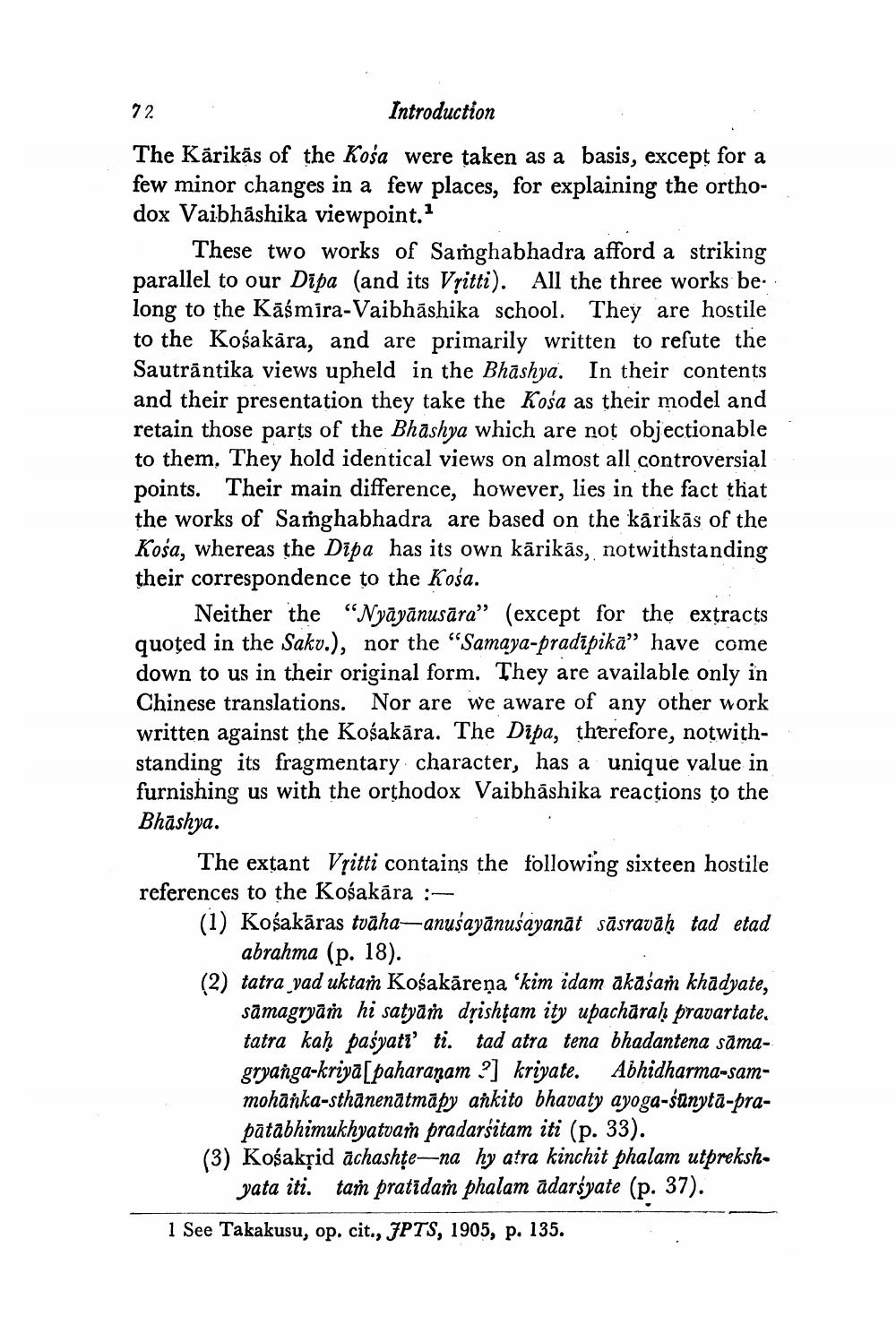________________ 72 Introduction The Karikas of the Kosa were taken as a basis, except for a few minor changes in a few places, for explaining the orthodox Vaibhashika viewpoint.1 These two works of Samghabhadra afford a striking parallel to our Dipa (and its Vritti). All the three works be. long to the Kasmira-Vaibhashika school. They are hostile to the Kosakara, and are primarily written to refute the Sautrantika views upheld in the Bhashya. In their contents and their presentation they take the Kosa as their model and retain those parts of the Bhashya which are not objectionable to them. They hold identical views on almost all controversial points. Their main difference, however, lies in the fact that the works of Samghabhadra are based on the karikas of the Kosa, whereas the Dipa has its own karikas, notwithstanding their correspondence to the Kosa. Neither the "Nyayanusara" (except for the extracts quoted in the Saku.), nor the "Samaya-pradipika" have come down to us in their original form. They are available only in Chinese translations. Nor are we aware of any other work written against the Kosakara. The Dipa, therefore, notwithstanding its fragmentary character, has a unique value in furnishing us with the orthodox Vaibhashika reactions to the Bhashya. The extant Vritti contains the following sixteen hostile references to the Kosakara : (1) Kosakaras tvaha--anusayanusayanat sasravah tad etad abrahma (p. 18). (2) tatra vad uktan Kosakarena 'kim idam akasam khadyate, samagryam hi satyan dsishtam ity upacharah pravartate, tatra kah pasyati'ti. tad atra tena bhadantena samagryanga-kriya[paharanam ?] kriyate. Abhidharma-sammohanka-sthanenatmapy ankito bhavaty ayoga-sunyta-pra patabhimukhyatvam pradarsitam iti (p. 33). (3) Kosaksid achashte--na hy atra kinchit phalam utpreksh yata iti. tam pratidam phalam adarsyate (p. 37). 1 See Takakusu, op. cit., JPTS, 1905, p. 135.




